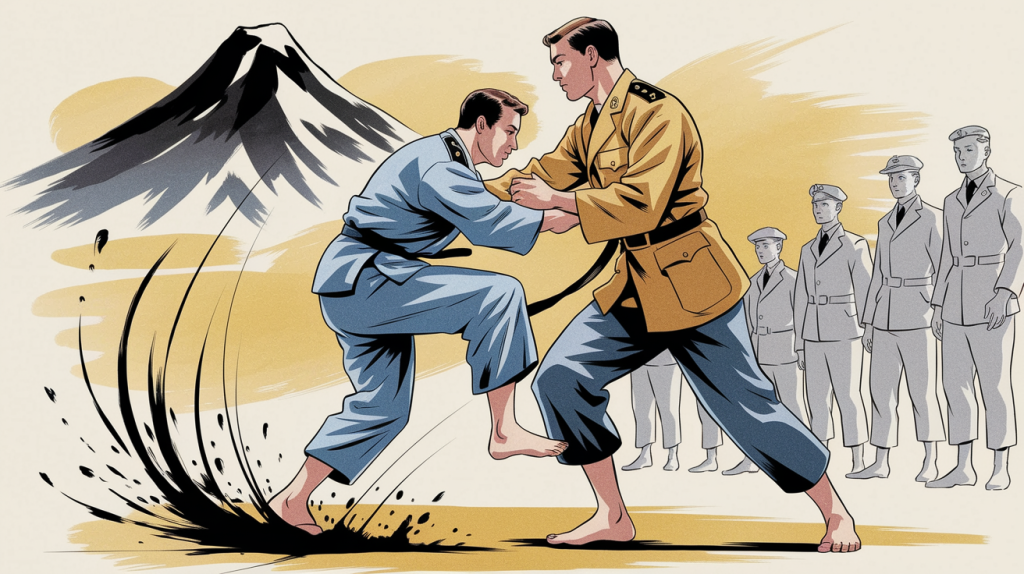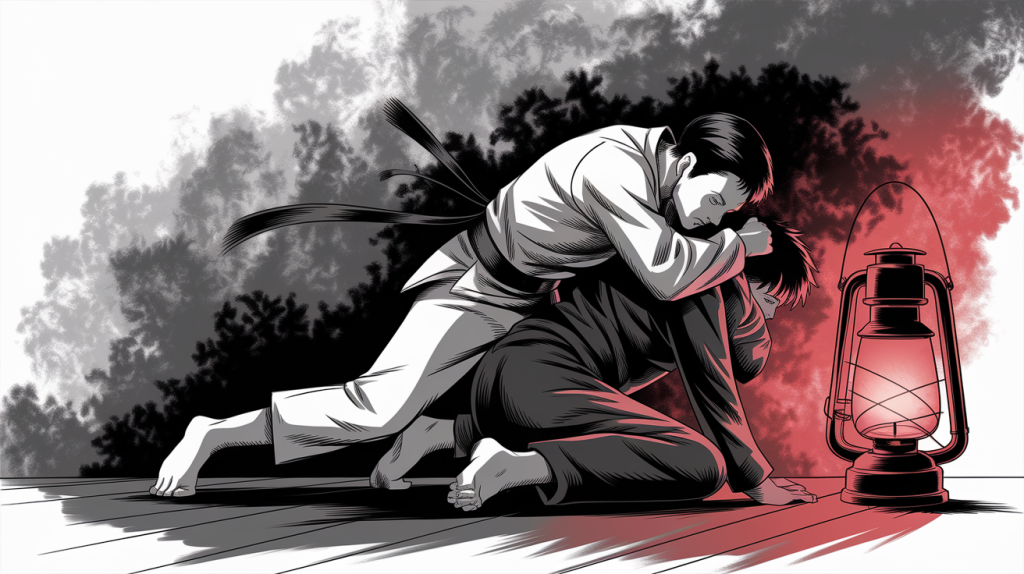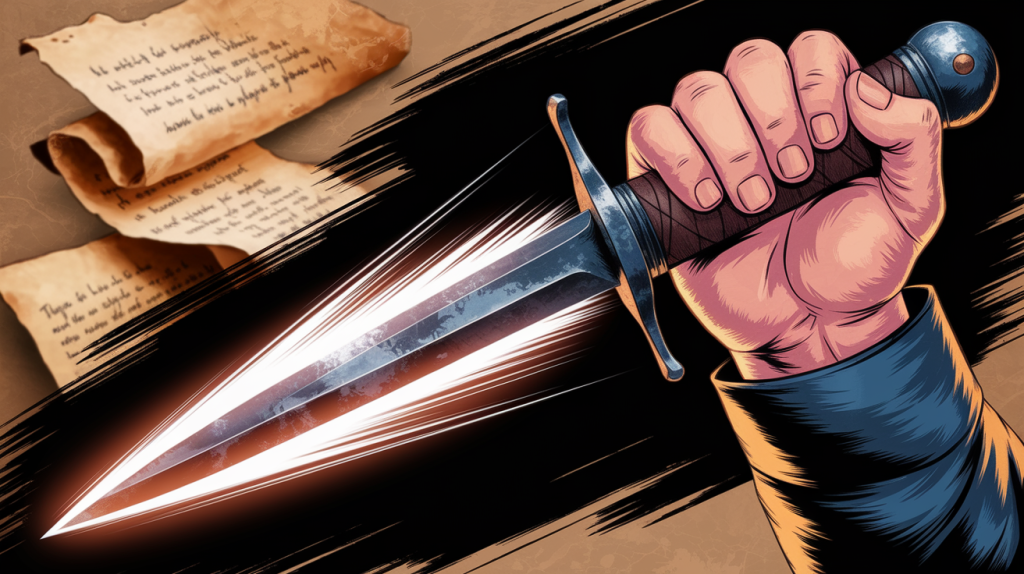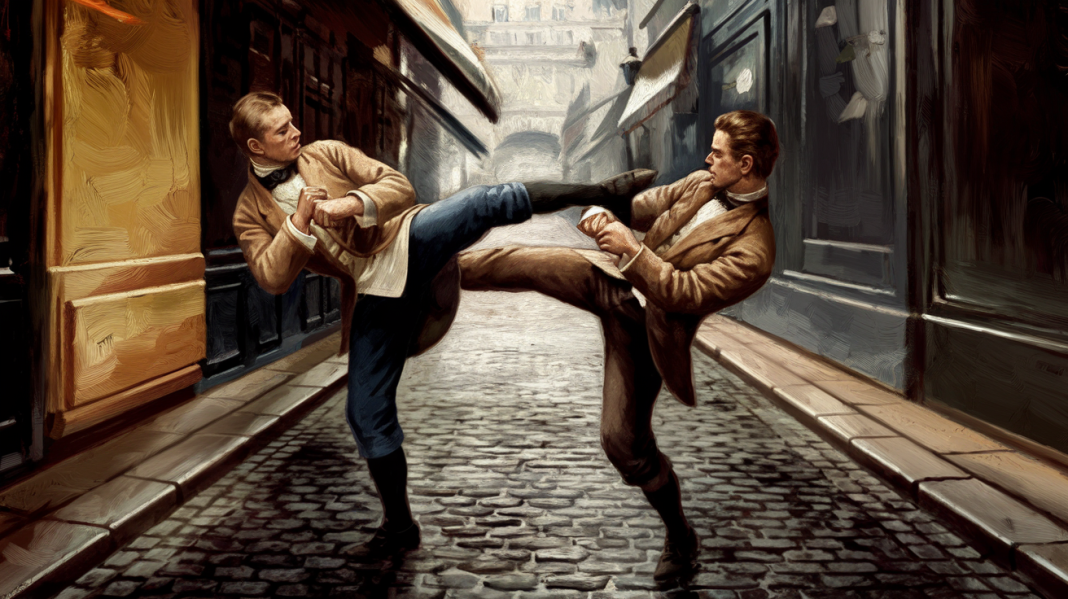Dermot “Pat” O’Neill was an Irish-born fighter, police officer, and wartime instructor who blended judo, rough-and-tumble methods, and pragmatic weapon work into a fast, brutal system for Allied special units in WWII—most famously the First Special Service Force (FSSF), the “Devil’s Brigade.” His program focused on what works under stress: surprise, violent takedowns, sentry removal, and simple finishing methods.

Early life and background
O’Neill was born in Ireland in the early 1900s and later worked in Shanghai during the 1920s–30s, a city with violent gang activity and constant street fighting. While in Shanghai he trained extensively—especially in judo—and built the base that would shape his close-quarters approach. He is also linked historically to the Shanghai Municipal Police circle that produced other major combatives names
Teachers and influences
Judo (Kodokan): Accounts note advanced judo training and coaching under respected instructors, which explains his heavy use of clinch entries, trips, and fast ground finishes.
Shanghai Police / Fairbairn circle: He is frequently associated with the same ecosystem as W.E. Fairbairn, whose “Defendu/CQC” system shaped Allied combatives. Even where O’Neill diverged, this world gave him the blueprint: simple, gross-motor tactics meant to end fights fast.
How he got into military teaching
When WWII exploded, the Allies needed people who could turn ordinary soldiers into effective close-quarters fighters—fast. O’Neill was brought in to train elite units, most famously the First Special Service Force (FSSF), the U.S.-Canadian commando unit nicknamed the Devil’s Brigade. Contemporary and later references credit him as their hand-to-hand/ECQ instructor; popular histories and media repeat this link. He’s also tied to OSS/SOE training networks and the Camp X ecosystem in North America.

Building the O’Neill method
O’Neill’s system—often described as Extreme Close-Quarter Fighting—was tailored to the missions of commando shock troops: night raids, infiltration, sentry removal, and short, savage fights in tight spaces.
Core ideas:
- Close first, hit first: initiate with deception and speed; hit hard before the enemy reacts.
- Clinch control + throws/trips: use judo-style off-balancing to dump opponents and finish immediately.
- Simple finishes: stamps, edge-of-hand blows, chokes, and short strikes you can do under stress.
- Knife and small-arms integration: methods for quick draws, close knife work, and point-blank weapon transitions common to raiding tasks.
A number of sources also connect O’Neill to the V-42 stiletto culture of the FSSF and to specific knife technique preferences—emphasizing deep, committed thrusting mechanics optimized for commando work.
How O’Neill’s combatives differed from other WWII instructors
O’Neill is often compared with W.E. Fairbairn (and Rex Applegate), who trained spies, saboteurs, and general forces. While there’s overlap (simple, brutal, fast), O’Neill’s material is frequently described as:
- More grappling-forward: heavier use of clinch entries, foot sweeps, and violent controls from his judo background.
- Commando mission focus: designed around behind-the-lines raids, sentry takedown, and silent work for small teams.
- Less “police restraint,” more surgical violence: compared with early Defendu police content, his emphasis skewed toward shock action and decisive finishes suited to special operations

How he taught it (method and delivery)
O’Neill taught short, high-intensity courses with a tight syllabus:
- Immediate action drills: pre-set entries from common starting positions (front, rear, corner) so men could launch without thinking.
- Stress and pressure: fast reps, rough handling, and scenario walk-throughs to inoculate soldiers against panic.
- Team tactics: two-man and small-unit takedowns, clearing confined spaces, and quick transitions to knife or firearm.
- Sentry removal & security work: approaches, grips, and finishes designed to be quick and quiet.
Legacy and impact
O’Neill’s approach left fingerprints on special operations training culture—especially in North America—through veterans he trained and instructors who documented the O’Neill System after the war. Many modern combatives programs still mirror his priorities: simple skills, violent intent, and mission-first design.
Key takeaways (for modern practitioners)
Keep it simple: few moves you can actually do at speed.
Own the clinch: entries, off-balancing, and brutal finishes.
Train for your mission: tailor tactics to the job (home defense, law enforcement, or competition are different contexts).
Integrate tools: understand how empty-hand, knife, and close-range weapon use connect.
Dermot “Patrick” O’Neill was an amazing combatives teacher, and he left us plenty of information to learn and practice still today.


